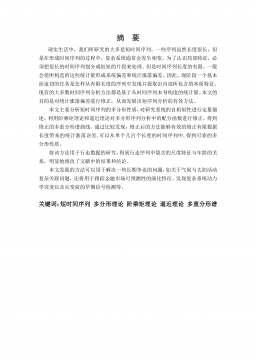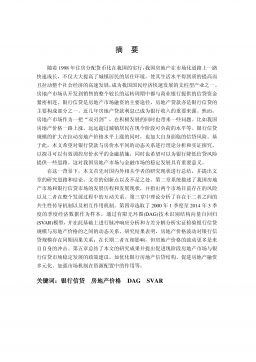轻型辐射地板供冷供热特性研究
VIP免费
摘 要
节能减排、降低能耗已成为我国亟待解决的课题。暖通空调系统能耗占公共
建筑能耗一半左右,其节能显得尤为重要。常规地板辐射采暖系统节能已经得到
公认,然而,热惰性大使得其启动时间长,不便采用更节能的间歇运行方式。轻
型辐射地板不但轻便、施工简单、便于安装维修,而且具有热响应灵敏等优点,
适合间歇运行。
本课题主要对三种轻型辐射地板进行长时间的实验测试,研究了其辐射供冷
供暖的稳态特性和动态特性;并建立相关简化动态模型,对轻型辐射地板动态特
性的影响因素进行了分析。三种轻型辐射地板分为回折型轻型辐射地板、供回水
同侧平行型轻型辐射地板和供回水异侧平行型轻型辐射地板。
具体工作如下:(1)针对三种轻型辐射地板分别搭建性能测试实验台,对其
稳定状态下供冷、供热特性进行测试,并对实验数据进行处理,得出三种轻型辐
射地板在不同工况稳定状态下的实际换热量、板面平均温度等稳态特性参数,分
析了换热量和板面平均温度与室温差、供水平均温度与室温差之间的关系,并对
三种轻型辐射地板进行了比较。(2)针对供回水异侧平行型辐射地板制订了动态
特性测试方案并进行实验测试。针对储热量提出了新的计算方法,即先根据稳态
测试所得辐射板换热量和板面平均温度与室温差之间的拟合关系式结合动态测试
时板面平均温度与室温差求出启动过程中逐时板面供热量,逐时储热量为流体供
热量与板面供热量之差,进而通过拟合积分得出启动过程中辐射地板存储的热量,
并进一步得出等效热容、时间常数等动态特性参数,分析了轻型辐射地板不同工
况下的动态特性。(3)针对具有均热板的供回水异侧平行型辐射地板进行了结构、
传热特性分析,并计算分析得出均热铝板温度分布均匀,可看做等温处理。在此
基础上建立了传递函数简化动态模型。由于均热铝板的良好的均热作用,使得饰
面层上下表面的温度可视作均匀的,因此轻型辐射地板也可看做是两边具有对流
换热条件的一维导热的无限大平壁,进而轻型辐射地板动态特性问题就简化成为
了两边具有对流条件的无限大平壁的非稳态导热问题。最后利用显式差分法验证
了传递函数简化动态模型的正确性,并对轻型辐射地板的动态特性影响因素进行
了分析。
实验测试和理论模型分析表明:(1)三种辐射地板稳态特性趋势一致:辐射
板表面温度随着流体进口温度的上升呈线性上升的趋势;供冷量随着冷媒进口的
上升呈线性下降的趋势,供暖量则相反;换热量随着板面平均温度与室温差的增
大呈幂指数的趋势增长,换热量和流体平均温度与室温差的关系也如此。且相同
工况下的换热量,回折型轻型辐射地板优于供回水同侧平行型轻型辐射地板,后
者又优于供回水异侧平行型轻型辐射地板。原因在于辐射板结构以及流量等参数
不同。(2)供回水异侧平行型轻型辐射地板启动过程中的板面平均温度和板面供
热量随着时间推移逐渐升高并维持稳定,流体供热量和瞬时储热量则随着时间推
移逐渐降低并最终维持稳定。其等效热容约为 25kJ/kg·K,时间常数约为 19 分钟,
供热工况下供水温度对轻型辐射地板的启动时间没有影响,但供水温度仅对轻型
辐射地板的换热量有较大影响,供水温度越高换热量越大。(3)笔者提出的传递
函数简化动态模型正确,供水温度对轻型辐射地板的时间常数没有影响;随着饰
面层厚度增加时间常数逐渐增大;随着饰面层导热系数的增加时间常数逐渐减小;
只要导热系数与热扩散系数不变,不论密度与热容如何组合,时间常数不变;时
间常数随着空气侧当量换热系数以及水流侧当量换热系数的增大而减小;变空气
侧和水流侧当量换热系数同时变化时,只要综合热阻保持维持不变,传热量均相
等,但是时间常数会有所变化,若空气侧逐渐变大均热板曾逐渐减小,则时间常
数先增大后减小。当两侧的换热系数互换时,时间常数相等。
关键词:轻型辐射地板 实验测试 等效热容 时间常数 传递函数
简化动态模型
ABSTRACT
Energy conservation and reducing energy consumption have become an urgent
issue in China. HVAC system energy consumption accounts for about half of the energy
consumption in public buildings, which makes the HVAC system energy saving very
important. Conventional radiant floor heating system is energy efficient,which has been
recognized. However, a large thermal inertia makes it have a long start-up time and
can’t use intermittent operation conveniently, which is a more energy-efficient
operation way. The light floor radiant panel not only has the advantages of cushion thin,
ease installation and maintenance, simple construction, but also quick thermal response,
which is suitable for intermittent operation.
In this paper, long time experiments were conducted respectively for three kinds of
light floor radiant panels to study their steady and dynamic characteristics. And relevant
simplified dynamic model was established, the influence factors of the dynamic
characteristics of a light floor radiant panel were analyzed. The three kinds of panels are
respectively serpentine type, supply/return water same side parallel type and
supply/return water opposite side parallel type.
The following specific tasks were made in this paper: (1) Three performance test
benches were built respectively for three kinds of light floor radiant panels to study their
steady state cooling and heating performance under different working conditions. The
heat transfer and panel surface average temperature were obtained. The relationship
between heat transfer and temperature difference between panel surface and chamber air
and relationship between heat transfer and temperature difference between fluid and
chamber air were analyzed. The three kinds of panels also were compared. (2) Dynamic
testing program was developed and then experiment was conducted for the
supply/return water opposite side parallel type light floor radiant panels, a new data
processing method for equivalent heat capacity was developed and verified. The
dynamic characteristics of the panel under different conditions were analyzed. (3) On
the basis of analysis of structural, heat transfer characteristics, temperature uniformity, a
transfer function simplified dynamic model was established and verified by explicit
difference method, and then the influence factors of the dynamic characteristics of a
light floor radiant panel were analyzed.
Experimental tests and theoretical model analysis show that: (1) Steady state
characteristics are consistent for the three light floor radiant panels. With the rise of
fluid inlet temperature, radiant panel surface temperature rises linearly. The cooling
capacity decreases linearly with the rise of fluid inlet temperature, but heating capacity
is on the contrary. Heat transfer grows exponentially as the increase of temperature
difference between the panel surface and chamber air, the relationship between heat
transfer and temperature difference between fluid and chamber air is also true. (2) The
dynamic testing program and data processing method for equivalent heat capacity
proposed by author were verified to be correct. Panel heating load and panel surface
average temperature increase gradually over time and remain stable at last. But fluid
heating load and transient heat storage capacity reduce gradually to stable. The
equivalent heat capacity is about 25 kJ/ kg·K and the time constant is about 19 minutes.
(3) The a transfer function simplified dynamic model were verified to be correct, and
the influence factors of the dynamic characteristics are analyzed completely. Water
temperature has no effect on the time constant. The time constant increases with the
increasing of facing layer thickness and decreasing of facing layer thermal conductivity.
The time constant will decrease with the increasing of equivalent heat transfer
coefficient on air-side and water-side.
Key Word: Light floor radiant panel, Experimental test, Equivalent
heat capacity, Time constant, Simplified dynamic model
目 录
中文摘要
ABSTRACT
第一章 绪论 ....................................................... 1
1.1 课题研究背景及意义 .......................................... 1
1.2 国内外研究现状 .............................................. 2
1.2.1 轻型辐射地板结构的研究与发展 ............................ 2
1.2.2 轻型辐射地板的传热过程及性能研究 ........................ 5
1.3 本课题研究内容 .............................................. 6
第二章 轻型辐射地板热性能测试实验台 ............................... 7
2.1 辐射板的结构构造和规格 ...................................... 7
2.1.1 回折型轻型辐射地板 ...................................... 7
2.1.2 供回水同侧平行型轻型辐射地板 ............................ 8
2.1.3 供回水异侧平行型轻型辐射地板 ............................ 8
2.2 实验测试系统的建立 .......................................... 9
2.2.1 实验目的 ................................................ 9
2.2.2 实验原理及测试参数 ..................................... 10
2.2.3 实验台的原理及要求 ..................................... 10
2.2.4 实验台的搭建 ........................................... 13
2.3 实验台的检测与调试 ......................................... 18
2.3.1 设备检测 ............................................... 18
2.3.2 管道检测 ............................................... 18
2.3.3 实验台的调试 ........................................... 19
2.4 本章小结 ................................................... 19
第三章 轻型辐射地板稳态特性实验研究 .............................. 20
3.1 轻型辐射地板稳态特性实验测试方案与注意事项 ................. 20
3.2 轻型辐射地板稳态特性测试结果与分析 ......................... 22
3.2.1 回折型轻型辐射地板 ..................................... 22
3.2.2 供回水同侧平行型轻型辐射地板 ........................... 25
3.2.3 供回水异侧平行型轻型辐射地板 ........................... 28
3.3 本章小结 ................................................... 31
第四章 轻型辐射地板动态特性实验研究 .............................. 32
4.1 轻型辐射地板动态特性理论研究 ............................... 32
4.1.1 辐射板供暖过程 ......................................... 33
4.1.2 辐射板时间常数 ......................................... 33
4.1.3 辐射板等效热容 ......................................... 33
4.2 轻型辐射地板动态特性实验测试方案与注意事项 ................. 34
4.2.1 调试方案与要求 ......................................... 34
4.2.2 实验方案与注意事项 ..................................... 35
4.3 轻型辐射地板动态特性实验测试结果与分析 ..................... 36
4.3.1 实验数据处理方法 ....................................... 36
4.3.2 实验结果分析 ........................................... 37
4.4 本章小结 ................................................... 41
第五章 轻型辐射地板简化动态模型 .................................. 43
5.1 轻型辐射地板结构和传热机理 ................................. 43
5.1.1 轻型辐射地板的结构特点 ................................. 43
5.1.2 轻型辐射地板的传热机理 ................................. 44
5.2 均热板的温度分布研究 ....................................... 47
5.3 简化动态模型 ................................................ 49
5.3.1 传递函数的介绍 ......................................... 50
5.3.2 轻型辐射地板传递函数模型的建立与求解 ................... 53
5.4 传递函数模型的显式差分法验证 ............................... 55
5.5 动态特性影响因素的分析 ..................................... 59
5.6 本章小结 ................................................... 65
第六章 总结与展望 ................................................ 66
6.1 总结 ....................................................... 66
6.2 展望 ....................................................... 66
参考文献 ......................................................... 68
在读期间公开发表的论文和承担科研项目及取得成果 ................... 72
致 谢 ........................................................... 73
相关推荐
-
七年级数学下册(易错30题专练)(沪教版)-第13章 相交线 平行线(原卷版)VIP免费
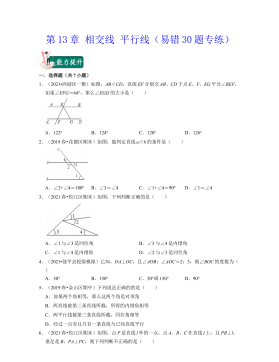
 2024-10-14 25
2024-10-14 25 -
七年级数学下册(易错30题专练)(沪教版)-第13章 相交线 平行线(解析版)VIP免费
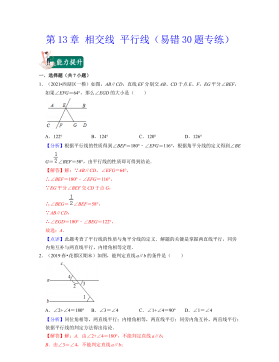
 2024-10-14 28
2024-10-14 28 -
七年级数学下册(易错30题专练)(沪教版)-第12章 实数(原卷版)VIP免费
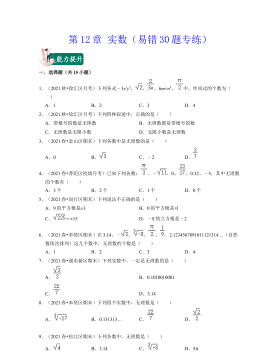
 2024-10-14 25
2024-10-14 25 -
七年级数学下册(易错30题专练)(沪教版)-第12章 实数(解析版)VIP免费
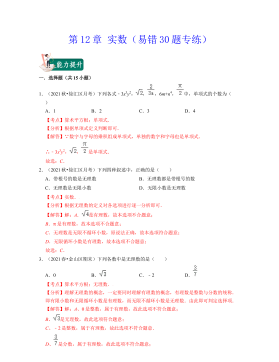
 2024-10-14 19
2024-10-14 19 -
七年级数学下册(压轴30题专练)(沪教版)-第15章平面直角坐标系(原卷版)VIP免费
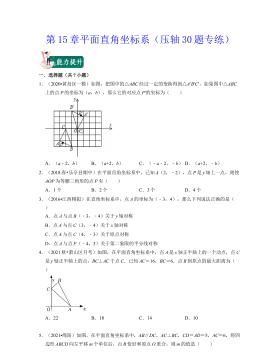
 2024-10-14 18
2024-10-14 18 -
七年级数学下册(压轴30题专练)(沪教版)-第15章平面直角坐标系(解析版)VIP免费

 2024-10-14 27
2024-10-14 27 -
七年级数学下册(压轴30题专练)(沪教版)-第14章三角形(原卷版)VIP免费

 2024-10-14 18
2024-10-14 18 -
七年级数学下册(压轴30题专练)(沪教版)-第14章三角形(解析版)VIP免费

 2024-10-14 30
2024-10-14 30 -
七年级数学下册(压轴30题专练)(沪教版)-第13章 相交线 平行线(原卷版)VIP免费
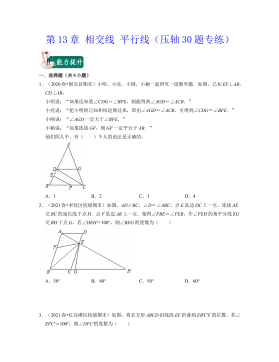
 2024-10-14 25
2024-10-14 25 -
七年级数学下册(压轴30题专练)(沪教版)-第13章 相交线 平行线(解析版)VIP免费
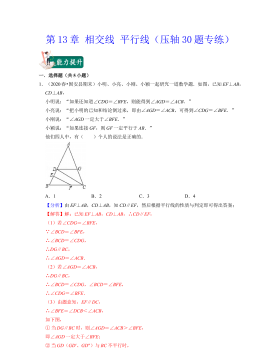
 2024-10-14 22
2024-10-14 22
作者:侯斌
分类:高等教育资料
价格:15积分
属性:77 页
大小:3.49MB
格式:PDF
时间:2025-01-09
相关内容
-

七年级数学下册(压轴30题专练)(沪教版)-第15章平面直角坐标系(原卷版)
分类:中小学教育资料
时间:2024-10-14
标签:无
格式:DOCX
价格:15 积分
-

七年级数学下册(压轴30题专练)(沪教版)-第15章平面直角坐标系(解析版)
分类:中小学教育资料
时间:2024-10-14
标签:无
格式:DOCX
价格:15 积分
-

七年级数学下册(压轴30题专练)(沪教版)-第14章三角形(原卷版)
分类:中小学教育资料
时间:2024-10-14
标签:无
格式:DOCX
价格:15 积分
-

七年级数学下册(压轴30题专练)(沪教版)-第14章三角形(解析版)
分类:中小学教育资料
时间:2024-10-14
标签:无
格式:DOCX
价格:15 积分
-

七年级数学下册(压轴30题专练)(沪教版)-第13章 相交线 平行线(原卷版)
分类:中小学教育资料
时间:2024-10-14
标签:无
格式:DOCX
价格:15 积分


